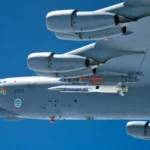
Rafael Köhler
March 5, 2024
As global defence strategies evolve, hypersonic weapons have emerged as a transformative force in military technology. Capable of travelling at speeds exceeding Mach 5 (five times the speed of sound), these weapons promise to revolutionise warfare by significantly enhancing strike capabilities and reducing reaction times for adversaries.
Hypersonic weapons fall into two primary categories:
Recent advancements in materials science, propulsion systems, and aerodynamics have enabled the development of hypersonic weapons. Key technologies include:
Hypersonic weapons offer several strategic advantages:
Several countries are at the forefront of hypersonic weapons development:
Despite their potential, hypersonic weapons face several challenges:
Hypersonic weapons represent the next frontier in military technology, offering unparalleled speed, precision, and strategic advantages. As global powers continue to invest in their development, these weapons are poised to reshape the landscape of modern warfare, necessitating new defence strategies and countermeasures.
At Müller & Co. Defence Innovations, we are dedicated to advancing defence technology and providing cutting-edge solutions. Our expertise in developing high-speed propulsion systems, advanced materials, and precision guidance technologies positions us at the forefront of this transformative field. Contact us to learn more about our capabilities and how we can support your strategic defence initiatives.





Müller & Co Defence Innovations: Your trusted source for quality military products and expert defence solutions. Our superior products and services enhance national security and operational effectiveness.
Training for Strength, Preparing for Peace.